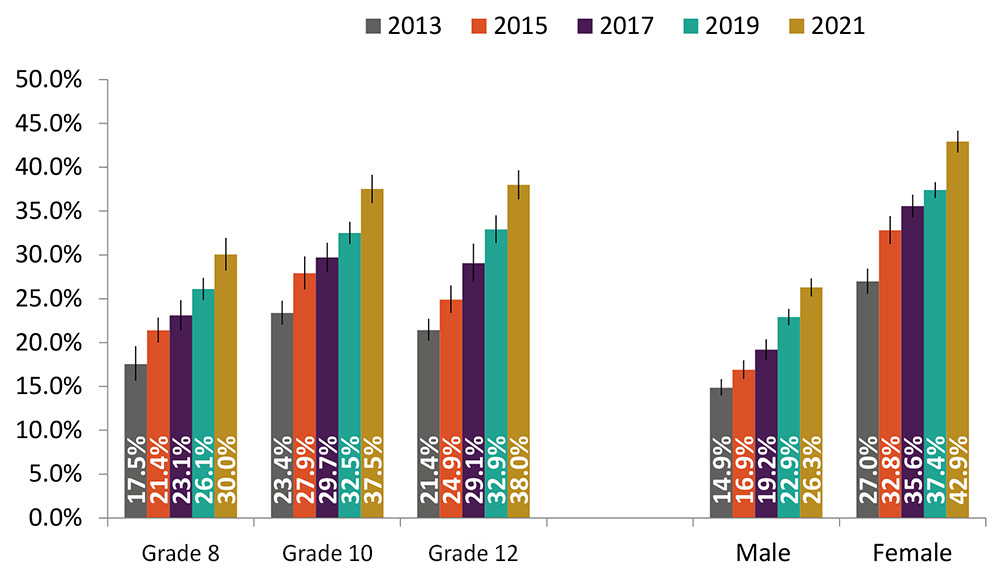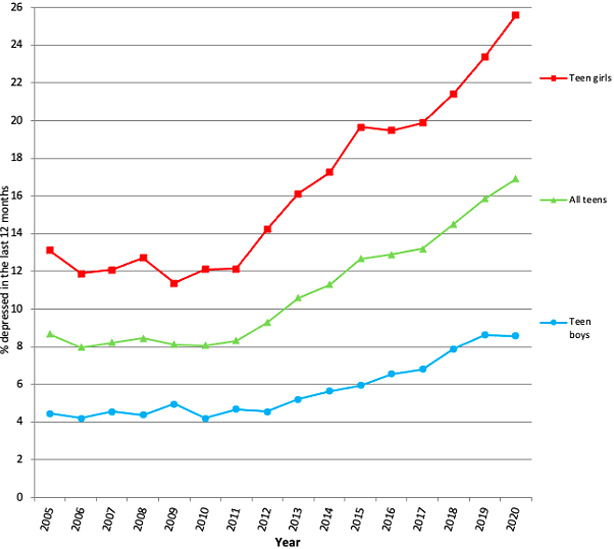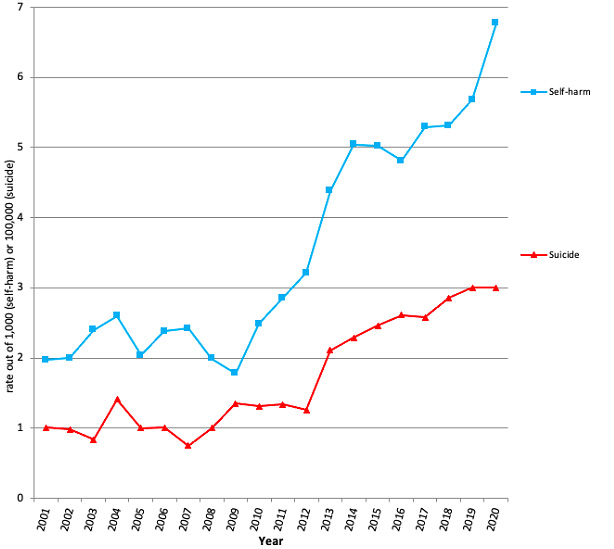Education
Youth Mental Health
“Our administration is very concerned about how social media is affecting our children. Youth rates of depression and other mental health issues are on the rise because of social media companies. As leaders, and parents, we have a responsibility to protect our young people." - Governor Cox
Governor Cox speaks about the harms of social media
Utah’s Social Media and Youth Mental Health Symposium 2023
Utah Youth Mental Health Data
The 2021 Utah Adolescent Health Report finds that:
- 18.6% of students reported self-harm, 19% of students seriously considered suicide, 14.4% of students made a suicide plan, and 7% of students made one or more suicide attempts.
- 35.1% of students report feeling sad or hopeless.
- 27.2% of students report being bullied over the internet, email, or by someone with a cell phone.
- Declines in mental health are larger for females.
Percent of Utah students (grades 8, 10, 12) who felt sad or hopeless almost every day for two weeks or more in a row

National Youth Mental Health Data
Every indicator of mental health and psychological well-being has become more negative among teens and young adults since 2012. Across the board, since 2010, anxiety, depression and loneliness have all increased. And it's not just symptoms that rose, but also behaviors, including emergency room visits for self-harm, for suicide attempts and completed suicides. - Jean Twenge, Generations
Around 2012, time on social media began to soar. In 2009, only about half of teens used social media every day. In 2017, 85% used it daily. By 2022, 95% of teens said they use some social media, and about a third say they use it constantly .

Percent of U.S. 12- to 17-year-olds with major depression in the last year, 2005-2020 . Source: National Study of Drug Use and Health. NOTE: Depression assessed using DSM criteria.

Emergency room admissions for self-harm and completed suicides, 12- to 14-year-old girls, 2001-2020 . Source: CDC WISQARS database.
If you or someone you know is considering suicide, call 833-372-3388 or visit SafeUT
Studies and Data
- Social Media & Mental Health: A Collaborative Review
- The U.S. Surgeon General's Advisory: Social Media and Youth Mental Health
- CDC Youth Risk Behavior Survey
- Teens and Social Media Use
- How Much Is Social Media to Blame for Teens’ Declining Mental Health?
- Frequent use of social media could be reshaping how adolescents’ brains develop
- Sleep and Social Media
Harms of Social Media, in the News
- American Psychological Association issues Health Advisory on social media use in adolescence
- US Surgeon General says 13 is “too early” to join social media
- TikTok pushes harmful content promoting eating disorders and self-harm into users’ feeds
- Facebook Knows Instagram is Toxic for Teen Girls, Company Documents Show
- Study: Social media use linked to decline in mental health




